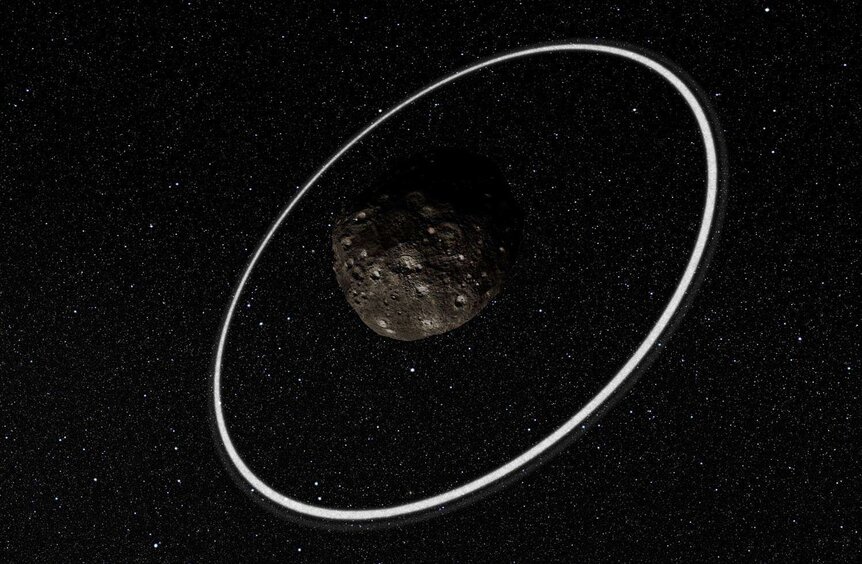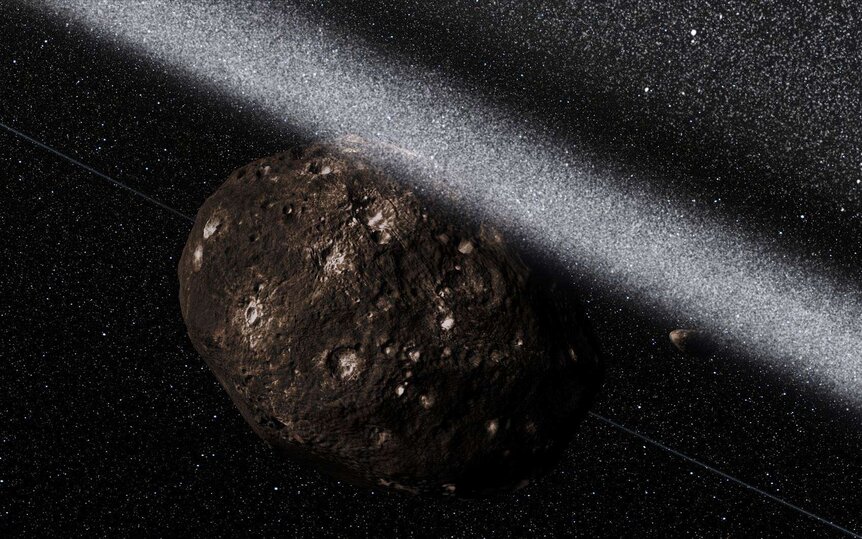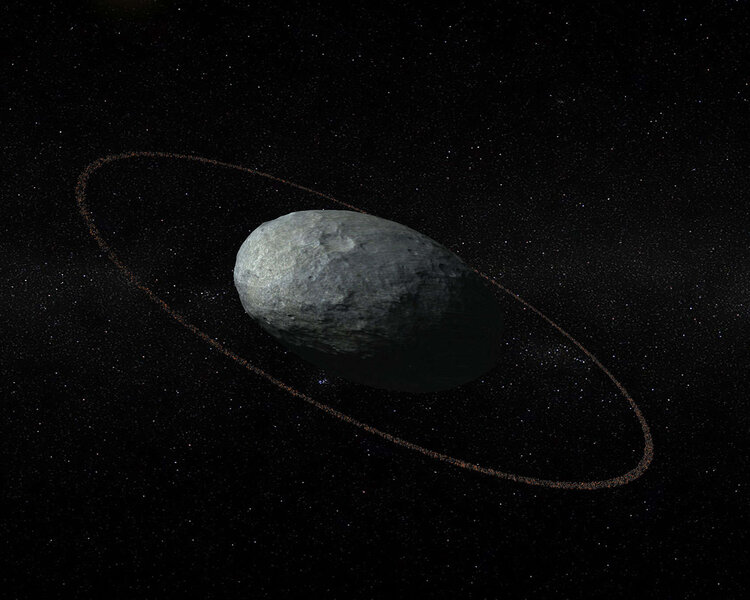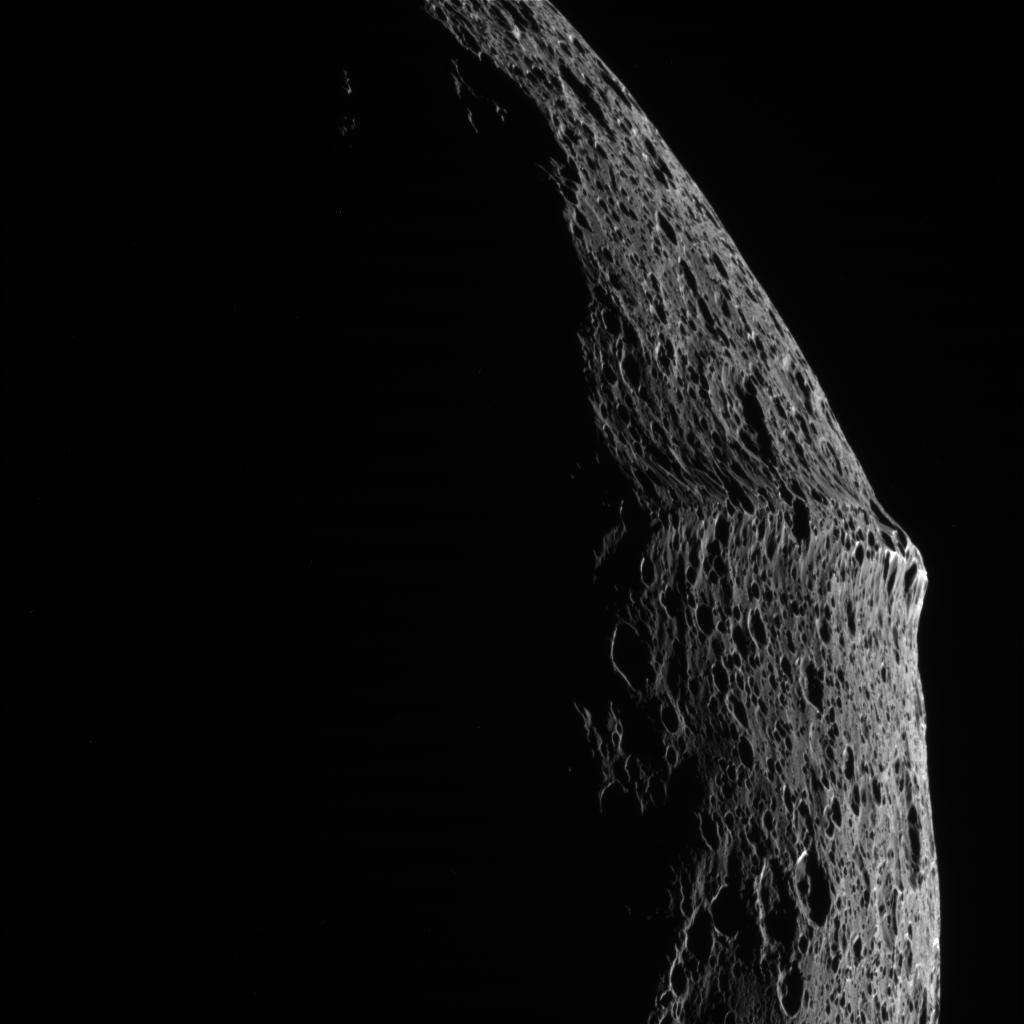Create a free profile to get unlimited access to exclusive videos, sweepstakes, and more!
Dwarf planets can have rings, too, if they're lumpy or oblate
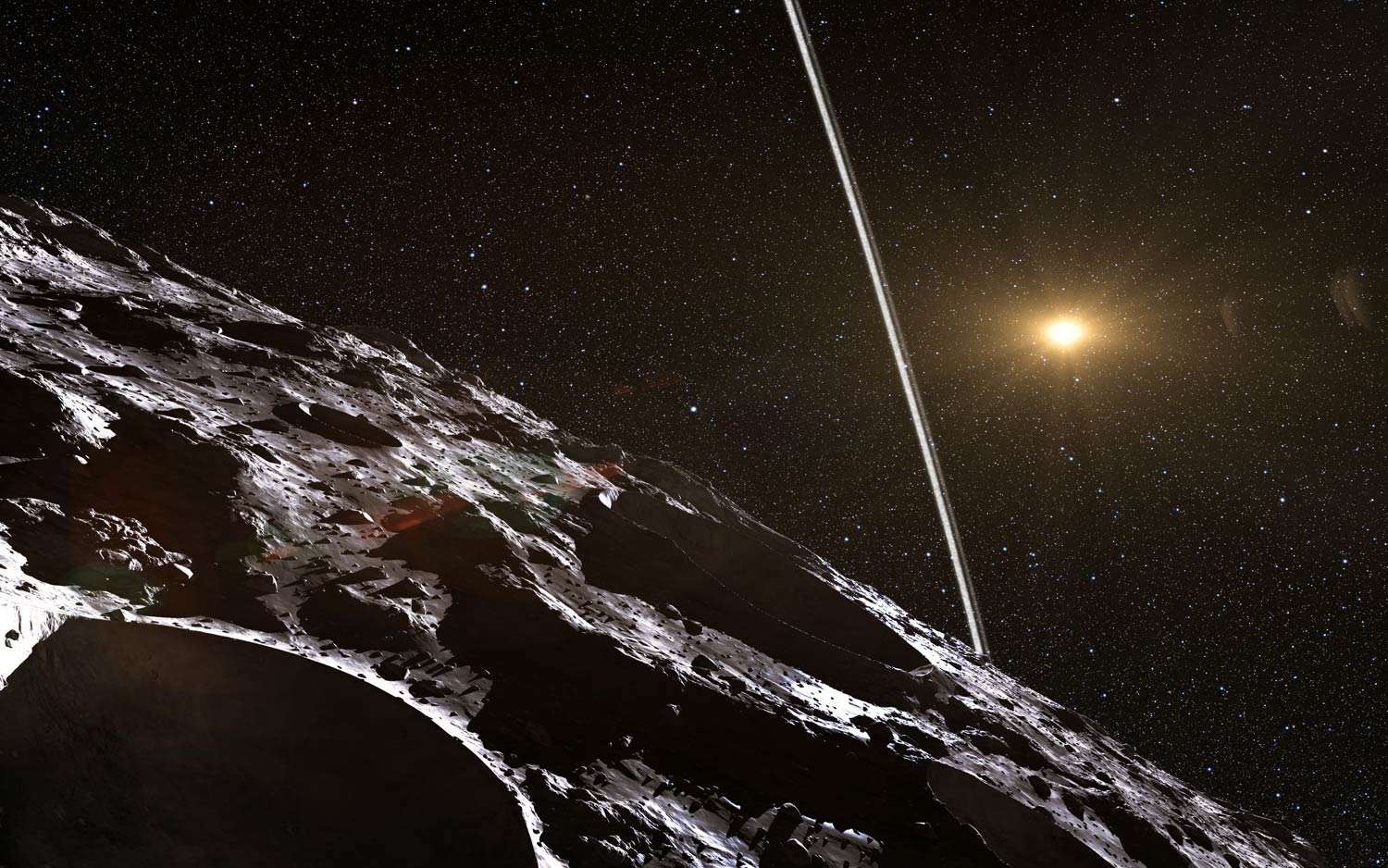
All four giant planets in the solar system have rings. Saturn’s are the most obvious, of course, but Jupiter, Uranus, and Neptune have them as well.
But they’re not alone. Two minor planets have rings made of countless icy particles as well. Their discovery was a shock to astronomers, because it wasn’t thought that smaller bodies could maintain a ring system. Nature, though, is more clever than we are, and found a way.
But how, exactly? Over time, rings tend to disperse without moons to shepherd them via gravity. But what if an object doesn’t have moons? The answer may be: asymmetry. That is, the object in question isn’t a sphere, and instead is either squashed into an ellipsoid (like a potato or European football) or has lumps like mountains on it.
The first non-planetary object found to have rings is Chariklo, which is what we call a centaur; an icy/rocky body orbiting the Sun beyond Saturn but inside the orbit of Uranus. It likely formed in the Kuiper Belt, the region past Neptune, and migrated in as it interacted with the giant planet’s gravity.
Chariklo isn’t terribly big, maybe 250 - 300 kilometers across. The exact shape is unknown, because it’s so far away it looks like a dot in telescopes. However, sometimes as seen from Earth Chariklo passes directly in front of a star (called a stellar occultation), and observers spread out over our planet can time how long the star disappears. This can then be used to get a size and shape for the object. It may be a sphere, but it’s also possible it’s elongated like a Russet potato.
During one occultation in 2013, though, the starlight dimmed long before and long after the main body blocked the star, and that’s how the rings were discovered. There are two narrow rings, about 390 and 405 km from its center.
Haumea is much larger than Chariklo, about 2322 × 1704 x 1026 km. It orbits much farther out, too, on a somewhat elliptical path that goes from about 5 to about 7.5 billion km from the Sun (outside the orbit of Neptune). Like Chariklo, its ring was discovered by stellar occultation in 2017. The ring is about 70 km wide and is about 2,300 from Haumea’s center.
So what’s constraining the rings? Haumea does have two tiny moons, but they orbit far too far out to affect the ring. Chariklo has no moons that we’ve seen.
A team of planetary scientists looked into this, focusing on the shapes of the two objects to see if that could prevent the rings from dissipating. They ran computer simulations of Chariklo and Haumea, virtually dumping hundreds of ring particles around each object to see how they behaved. Crucially, they used the non-spherical shapes of the two objects in their computer models. They let Chariklo be a sphere but added a small 5-kilometer high mountain on its equator. For Haumea they just used the potato-shape and let it be smooth.
What they found is that the irregular shapes profoundly affect the ring particles. The key is a point above each body called the corotation distance: At this distance, a particle orbiting the world goes around it once for every time the object rotates once. On Earth we call this a geosynchronous orbit, and a satellite there orbits the Earth once every 24 hours.
A ring particle orbiting inside this distance gets perturbed by the asymmetry of the body (the mountain on Chariklo or the shape of Haumea) and gets pulled closer in, eventually dropping down onto the body itself. A particle outside this distance gets yanked farther out. But they don’t just continue to flow away. A process called resonance kicks in, where the particle’s orbital period is a simple fraction of the body’s rotation (for example, the body spins twice for every once the ring particle orbits). This is similar to pumping your legs on a swing to go faster and higher: An orbital resonance pulls the particle back down a bit. Any particle that moves outward will essentially stop at the 2:1 point.
And that constrains the rings. It’s a little more complicated than this — everything is, it seems — but in the end the inner and outer edges of the rings are defined by how fast the main body spins and how long it takes a ring particle to orbit. And you don’t need moons to do it. Just the off-kilter main objects themselves. This process is fast, too, taking just a few million years (which on a cosmic timescale is pretty quick).
That’s a pretty wild result. It means that there could be lots of objects on the solar system with rings, in fact. This study doesn’t talk about how the rings formed in the first place, but an obvious genesis is through a collision with a smaller body that throws a lot of ejected debris into space around the object. This would flatten and spread out, forming a wide ring that then gets narrow as the resonance effect kicks in.
There are some ideas that the two moons of Mars, Deimos and Phobos, formed this way. Did Mars once have a ring? For that matter, did Earth, after something huge collided with us to form the Moon? Maybe, for a while.
One more fun point: A lot of the ring material falls onto the body, and that collision is typically fairly slow for something as small as Chariklo or Haumea. That material would survive the impact and pile up, possibly forming a ridge around the object’s equator. Well hey, Saturn’s moon Iapetus has exactly that sort of weird ridge. A recent hypothesis is that it did have a ring for a while, too. A ringed moon around a ringed planet!
Nature is not just more clever than we are. It’s infinitely cooler, too.
More rings may be found as we see more of these small bodies occult stars, or see them up close with spacecraft. And I wonder how many ringless objects we’ll find that till have equatorial ridges. Rings, at least temporary ones, may be the rule and not the exception in the Universe.
